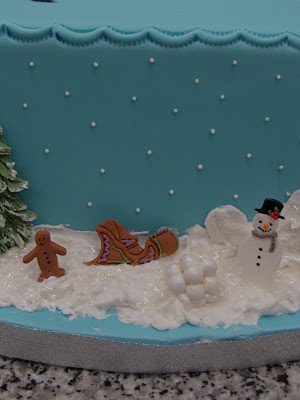
For my first attempt, I wanted to create an Alice in Wonderland egg. Besides the obvious reference of traveling through the rabbit hole and other small spaces, both the books and panoramic eggs date back to Victorian England. In Through the Looking Glass, Alice also happens upon Humpty Dumpty, a classic egg character.

Sugar eggs are fairly easy to make. The "shell" is made by packing damp sugar into a mold, and then hollowing it after it has partially dried. I used vinegar instead of water so it would dry more quickly. The decorations are all piped in royal icing, except for the colored John Tenniel illustration which I printed on cardboard. I also had help from my boyfriend, Trevor, with Photoshopping out Alice so I could add her in separately.

My second egg is a PG-13 rated "peep show". When you peer inside, there is a pile of red gumpaste ruffle with two sexy legs sticking out. The decorations are all edible (minus the legs) and are composed of royal icing, gumpaste, and dragee pearls.

I had a lot of fun making these eggs, and I feel like the design possibilities are endless. Please send me any ideas that you have (puns and conceptual ideas are encouraged) and I'll try to make them for next year.


























